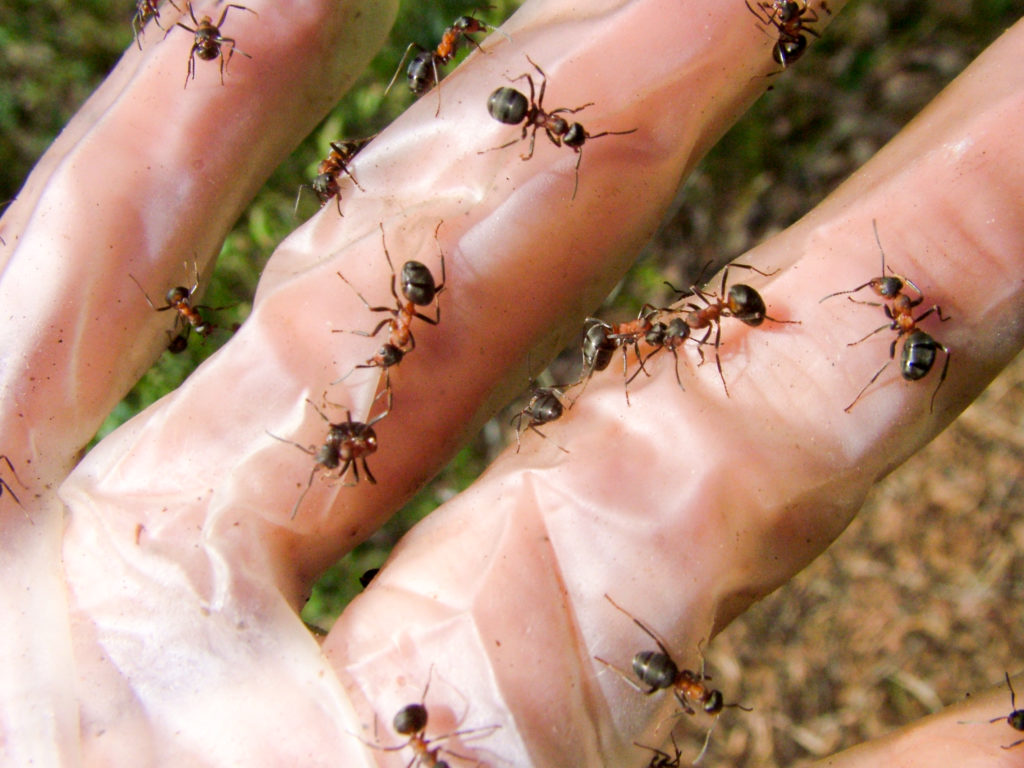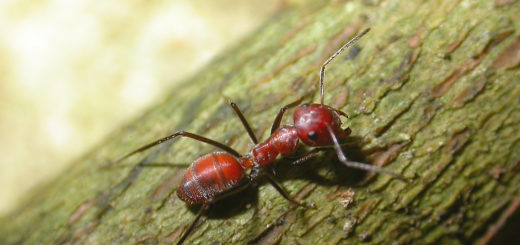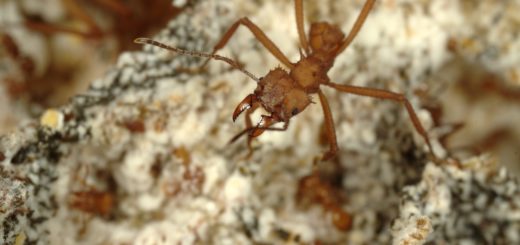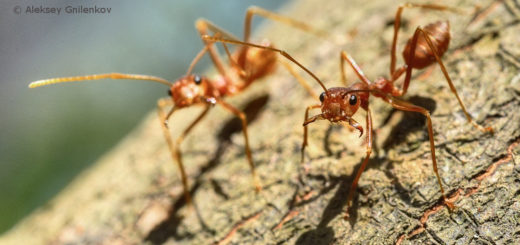Muurahaiset. That’s ants in Finnish.
How is the ant society organized?
How do ants communicate?
Will these ants fight if I bring them together? Who will win?
How come there are queens and workers? What are the flying ants up to?
How many different kinds of ants are there?
A View compiled by Heikki Helanterä

©Heikki Helanterä
Ultimately, many of the questions the public has about ants are the same questions we as myrmecologists are asking. This makes popularizing ant science rewarding and straightforward. This is a luxury compared to for example molecular biology. People intuitively grasp the fundamental questions. And luckily some funding agencies agreed that sharing knowledge on how we approach these questions is worthwhile. So for the last eight months I’ve been able to devote my time largely to writing a popular science book about ants together with my co-author Katja Bargum, a colleague from when we were doing our PhD theses and nowadays a journalist.
However, most of you who read this blog won’t be able to comprehend the content of our book. Only less than one in a thousand of the world’s population will understand what I and Katja are saying. This is because we are writing in Finnish.
Why are we writing to an audience and market so minuscule? At a personal level, it is lovely to write in the language in which you are at your most expressive. There are also bigger reasons why this book needs to be written in Finnish. Even if science is international, and the working language at Finnish universities largely is English, and a large part of the Finnish population knows English, it is our duty to make science accessible in Finnish. There hasn’t been a popular science book on ants in Finnish since Journey to the Ants was translated more than two decades ago, and a lot has happened in our field since!

©Heikki Helanterä
People in Finland are generally closely connected to nature, including ants. This gives us a great ground for explaining big things. We want to show that exciting biology exists literally in people’s backyards. Everybody has seen leaf-cutter ants on TV. But we want to tell them that evolutionarily speaking, the Formica climbing up the tree trunk to their aphids or the jet black Lasius fuliginosus with their cardboard nests are up to the same thing as the leafcutters – engaging in mutualisms. Comparisons become even broader. We want to show that the Lasius niger queens people encounter on a mating flight can be seen as tiny gametes of a superorganism, and the worker ants as cells in our human bodies. We can use ants, locally and globally, as gateways to topics as diverse as swarm intelligence, keystone species, animal communication, major transitions in evolution, biodiversity, and the evolution of pathogens. All this with organisms most people have been already observing and wondering about on their own.
We want to bring across the process of doing science as well, and this is why I think it is valuable that scientists themselves are popularizing science. Our hands-on perspective is valuable to the public. As colleagues, we can appreciate and describe the effort behind the studies we talk about.

©Heikki Helanterä
The book is also our tribute to our Finnish ant researcher colleagues, past and present. A colleague recently asked me how come ant research in Finland is so strong compared to the tiny ant diversity we have (~60 species). Certainly historical contingency plays a role: in a small country a few strong researchers can have a long lasting legacy. We want to acknowledge that legacy, and hopefully play a small part in its continuation.
I want to finish by saying two things to my colleagues. First, a huge thank you to everybody we have contacted for photos! You have been immensely helpful, even if the only thing we can offer in return is a copy of a book you likely won’t be able to read. Second, can you please hold back publishing your cool and exciting work until we have submitted the manuscript for the book? It is very difficult to finish the job when every time I open the computer, I bump into some finding that I immediately want to cram into the book! In this light, I should have not gone to the IUSSI meeting either…






I have long admired the strength of the myrmecological community in Finland. What a wonderful effort to popularize their work for the general public. (Maybe I should learn Finnish.)
PS – Good luck getting all the avid ant scientists to hold off on publishing!
I applaud your endeavor, I believe it is part of our (scientists) duty to popularize science, and in particular in our maternal language. I agree 100% that the emotions and local examples are a big plus when writing in not a foreign language.
Besides, I have a finish colleague at my University so probably I will be able to enjoy the book. I wrote myself, with a colleague from Argentina, a book about ants for scientific divulgation in spanish. I have been astonished since the time of the publication of the first edition about the impact it had. Students of primary and secondary schools have read it, and analyzed it with their teachers, sent questions, payed visits to the lab, and each of them became an amplifier of our knowledge -any why not, love- for ants.
Wait and you will see! congrats on this project!